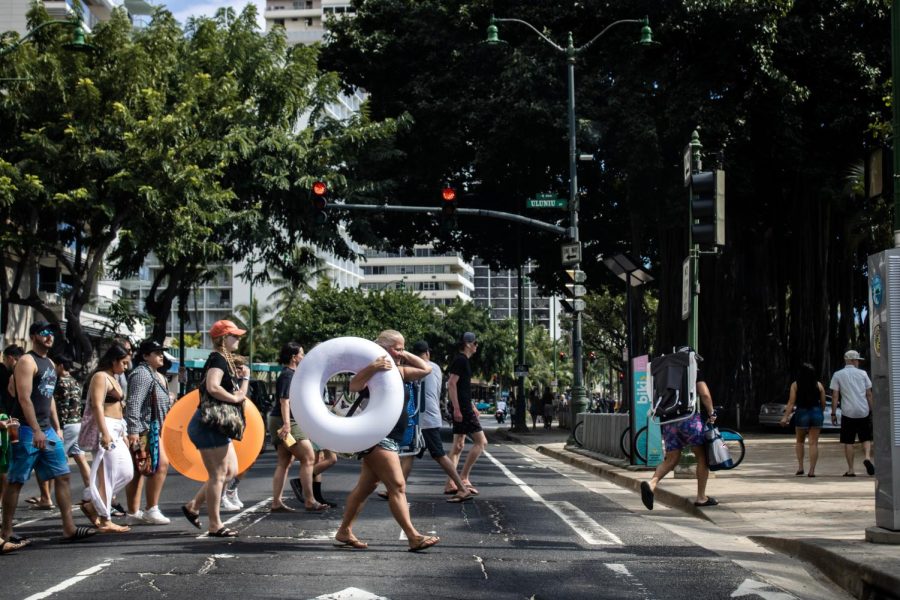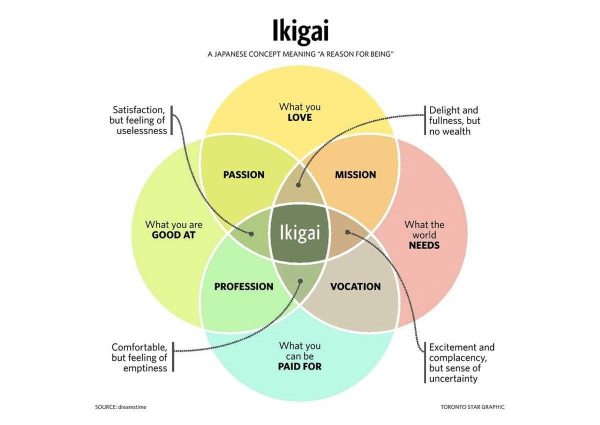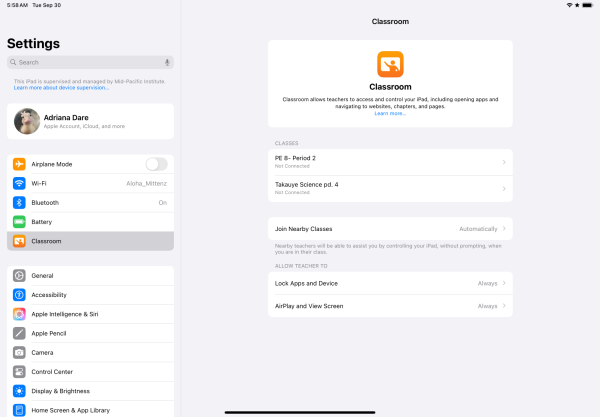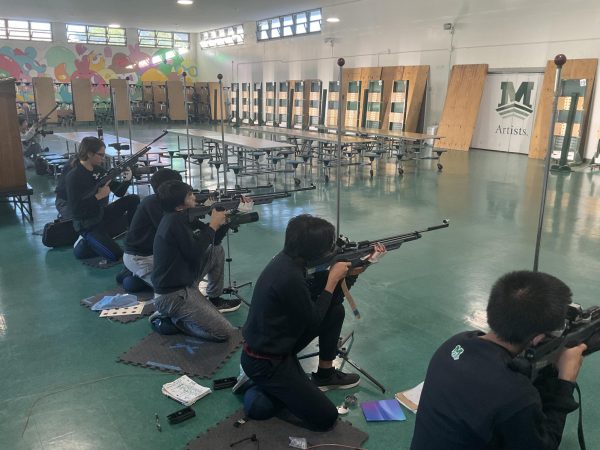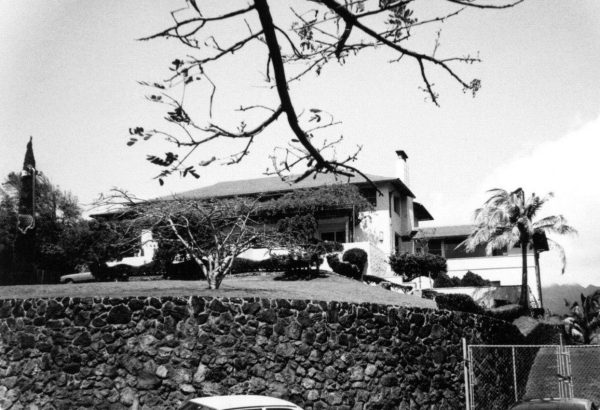Tourism in Hawai’i: lessons from the pandemic
By Evan Baron
Staff Writer
Hawaii is in a pivotal position, as climate change and rising living costs make life more of a struggle for average residents.
Bringing Hawaii to the world has had various impacts, ranging from economic support to altering the cultural perception of what it means to be from Hawaii both to residents and outsiders.
According to the Hawaii Tourism Authority, at any given moment, 10% of the people in the Hawaiian Islands are tourists. The tourism industry accounts for 20% of Hawaii’s income and employs one in four residents.
“Tourism is the main driver of the economy. It controls everything, so we’re kind of stuck with it,” MPX teacher John Cheever said.
Aside from its economic impact, tourism has also altered the Hawaiian identity and culture.
“It’s made us build around tourism and now we’re known for it,” junior Tyler Leong said.
The distinction between Native Hawaiian and being a resident is not effectively communicated to the rest of the world.
“To find out you’re from Hawaii, whether you’re Hawaiian or not, first of all, they say, ‘oh, you’re Hawaiian.’ And you’re not Hawaiian,” Cheever said.
A more physical impact of tourism is its strain on the daily lives of residents.
“Look at Lanikai. In Kailua, the people from there have to completely adjust their lives and their normal routines to make sure that they’re out [of Lanikai/Kailua] before the influx of tourists,” said Hawaiian language teacher Shaun Kamakea-Young.
Social media has driven even more tourist volume towards previously secluded areas.
“With things like Yelp and bloggers posting about “hidden” spots on Oahu, it’s made a lot of those places more well known and frequented,” Young said.
Heightened volumes of tourists change the unique sense of place that many locations had around the islands.
“It’s almost discouraging for locals to want to go [to “hidden” spots]. The experiences they would have had in those places are now altered,” Young said.
Many places around the islands provide specific resources for Hawaiian cultural practices. These places are being jeopardized as tourists search harder and harder for new experiences.
“A lot of us are very protective of the resources that we have here. Especially here on Oahu, where the native resources are so limited. You don’t want any Tom, Dick and Harry just going up there and being careless about the way in which they take things,” Young said.
Rising living costs have forced families that lived in the same place for generations to relocate due to the state of economic exclusivity brought on by the publicity that tourism brings to the islands.
“In places where families traditionally would have resided for generations in the same place, people have become a lot more transient,” Young said.“Rather than growing up in the same area that you probably would have lived in for generations, now, a lot of people, their first generation in those places.”
Even considering the known negative impacts of the tourism industry, there are benefits.
“Having tourists is one of the reasons why we’re able to succeed as a state. Our jobs, our incomes rely on them,” said junior Laulea Haga.
For such a core industry, tourism is a fragile enterprise that’s at the whim of nature, including viral pandemics.
“Tourism is so geographically committed. When the sea levels rise and Waikiki beach has to be replenished every year, by 2050, how are they going to possibly contend with that?” Cheever said.
The COVID-19 pandemic illustrated just how reliant the state is on the tourism industry. In the worst months of the pandemic, the state discussed diversifying the economy to make the economy more resilient instead of reliant on tourist numbers.
“Even with the drive to diversify the economy, during COVID, there were a lot of words but not a lot of action,” Cheever said.
A possible alternative to being a pure service economy is to foster interstate commerce.
“I think that we could maybe increase trade with other states,” said Leong, when asked specifically how the state could pivot away from tourism as our sole means of survival.
Retraining some of the workforce to participate in emerging professions is another way to diversify.
“We’re the cyber security capital of the Pacific, but we don’t have enough people to fill these jobs, so they’re having to bring people from the mainland,” Cheever said.
Efforts to diversify the economy encountered many challenges, even before the pandemic. Cheever attributes this to a lack of political appetite due to the contributions that lawmakers receive from the tourism industry.
“The tourism industry contributes to their (politicians) campaign funds, so they take their meetings and whenever there’s a bill that’s going to do something like curb tourism, those things get shot down,” he said.
Cheever theorizes that to reform itself, the tourism industry should focus on attracting more responsible clientele who will contribute to the economy more meaningfully.
“It comes down to what tourists spend per day. If they want to target a higher end of the market instead of going for volume, they wouldn’t need as many people,” he said.
As Hawaii continues to see greater volumes of tourists, and as climate change makes it harder to live, the problems that face Hawaii will only grow, and the squeeze will be felt by residents.
“More and more [of] Hawaii’s economy is becoming tied with tourism. And so even though people don’t want to be as invested into that industry, they’re almost forced into it as a means of survival,” Young said.

